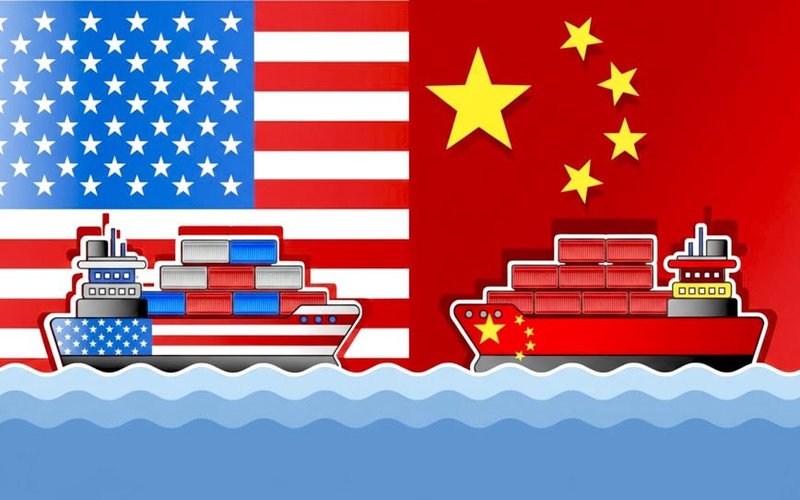Top US and Chinese economic officials have agreed on the outline of a new trade framework that could avert another round of steep tariffs and ease Chinese export controls on critical minerals, US officials said Sunday.
The agreement, reached on the sidelines of the ASEAN Summit in Kuala Lumpur, sets the stage for President Donald Trump and Chinese President Xi Jinping to finalize terms when they meet later this week at the APEC summit in Gyeongju, South Korea.
US Treasury Secretary Scott Bessent said the talks had defused the threat of Trump’s 100% tariffs on Chinese imports, which were due to take effect November 1.
Trade Truce Framework Reached
Secretary Bessent also said China is expected to delay for a year the rollout of its new licensing regime for exports of rare earth minerals and magnets, pending a policy review.
“I think we have a very successful framework for the leaders to discuss on Thursday,” Bessent told reporters after meeting with US Trade Representative Jamieson Greer, Chinese Vice Premier He Lifeng, and top trade negotiator Li Chenggang.
The Kuala Lumpur discussions marked the fifth round of in-person negotiations since May.
Bessent said he expects the current tariff truce, due to expire on November 10, to be extended, and predicted that China would soon resume large-scale purchases of US soybeans after a month-long pause in favour of Brazilian and Argentine suppliers.
“US soybean farmers will feel very good about what’s coming, not just for this season but for several years ahead,” Bessent said on ABC’s This Week.
Greer echoed that optimism on Fox News Sunday, saying the two sides had agreed to “pause some punitive actions” and found “a path forward where we can have more access to rare earths from China and help balance our trade deficit with stronger US exports.”
China Preaches Caution, Trump Strikes Confidence
Chinese officials offered a more restrained assessment. Vice Minister Li Chenggang said the two sides had reached a “preliminary consensus” that would now go through internal review.
“The US position has been tough, while China has firmly defended its interests and rights,” Li said.
“We’ve had very intense but constructive consultations in exploring solutions and arrangements.”
Trump, arriving in Malaysia for the ASEAN summit, the first leg of his five-day Asia tour, expressed confidence that a deal was close.
“I think we’re going to have a deal with China,” he told reporters.
Rare Earths, Tariffs, and Strategic Leverage
The negotiations come amid renewed trade tensions between the world’s two largest economies. Trump’s 100% tariff threat was in direct response to China’s expanded export controls on rare earth elements and magnets, materials critical for semiconductors, EVs, and defence technology.
China controls over 90% of global supply of rare earths, and its recent restrictions have caused sharp price spikes and global shortages.
Analysts warn that simultaneous US tariffs and Chinese export limits could severely disrupt high-tech supply chains.
In addition to tariffs and minerals, US and Chinese officials discussed a broad agenda that included trade expansion, the US fentanyl crisis, port entrance fees, and the transfer of TikTok to US ownership.
Bessent told NBC’s Meet the Press that technical details of the TikTok transaction are still being finalized, but said Trump and Xi are expected to “consummate the deal” in South Korea.
Next Steps and Talking Points
Trump said future meetings with Xi are also planned in both countries.
“We’ve agreed to meet later in China, and we’ll also meet in the US, either in Washington or at Mar-a-Lago,” he said.
Among the expected discussion topics in Gyeongju are:
- China’s renewed purchases of US soybeans,
- Tensions over Taiwan, which Beijing claims as its own, and
- The detention of Hong Kong media tycoon Jimmy Lai, whose case has become a global symbol of Beijing’s crackdown on dissent.
Trump also said he intends to seek China’s co-operation on dealing with Russia, as Moscow’s war in Ukraine grinds on.
A Fragile Truce in a High-Stakes Rivalry
The Kuala Lumpur breakthrough comes after months of escalating friction.
Despite a fragile truce brokered in Geneva in May and extended in August, both nations have continued trading sanctions and export restrictions.
China’s expanded rare earth controls have already strained global manufacturing supply chains, prompting Washington to consider new limits on technology exports to China, including software, laptops, and even jet engines, according to Reuters.
If Trump and Xi can finalize the framework this week, it could mark the most significant easing in US-China trade tensions since the first “Phase One” agreement nearly five years ago.
But with both sides emphasising their willingness to defend national interests, the détente remains fragile, and the global economy is watching closely.
